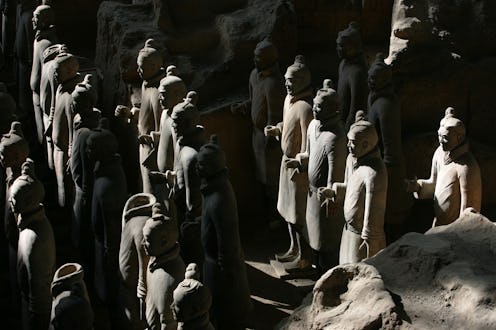News
Life Might Have Started From Wet Clay
Clay is good for many things: Entertaining toddlers, smearing on your soon-to-be rejuvenated face, and producing Earth's first life forms. Or so science now believes: humble clay may have been the playground for the planet's first lifeforms, according to Cornell researchers. Clay's 'hydrogel' properties and cellular make-up provide the perfect setting for biomolecular reactions that could have eventually led to life, according to the study, published in Thursday's issue of Scientific Reports.
The new findings could finally make sense of a problem posed by scientific theories of life formation. It's long been thought that biomolecules, such as amino acids — which form proteins, which are one of four macro-molecules that form life's basic structures — got their start in oceans. The unsolved mystery was how biomolecules could have found themselves in a setting conducive to hooking up and making macromolecules. The swirling churning ocean didn't give them enough time or protection to carry out the process.
Clay provided the solution. It's essentially what's called a hydrogel: It soaks up liquid — in this case, ocean water — like a sponge (which sort of explains why your hands feel all funny after working with it). The afore-mentioned biomolecules have a penchant for attaching to clay's cellular surfaces. Once there, it's pretty easy to get them across the cell membrane and into the inside of the cell, an area called the cytoplasm. And thanks to the membrane that keeps out some amino-destroying enzymes, the biomolecules have the protective environment that was missing in the chaos of the ocean. The enclosed setting, researchers think, proved conducive over time to producing reactions that could eventually have lead to proteins, nucleic acids (which go on to form DNA), and two other chemical structures, carbohydrates and lipids — the other macromolecules that make up the basic structures of living organisms.
Conveniently enough, the geographical timeline matches up: Clay first started showing up as biomolecules began forming incomplete cell-like structures. Clay, maybe, was just what those protocells needed to realize their full, life-yielding potential.
The researchers are now looking into its potential as a sort of au natural petri dish for new drugs' manufacture.
“Why consider clay? It's dirt cheap,” the report said. “Better yet, it turned out unexpectedly that using clay enhanced protein production.”
Fox News has a slightly different take on the study: "Study suggests life began with clay, echoing Bible creation story," it writes. "According to the Old Testament, God made the first man Adam from earth or clay," it explains. "Adam comes from the Hebrew word adamah, which means earth. The Quaran, Greek mythology and other creation stories also say God molded man from clay."
Right. Well, anyway, there you have it: We're all made of dirt.
